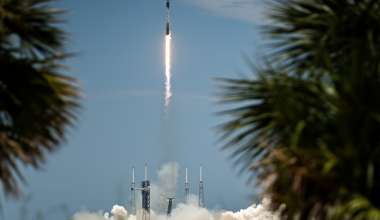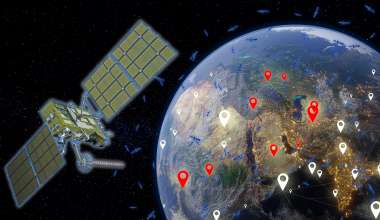The world is different now as COVID-19 is impacting government, business, and public behavior. The Department of Defense has taken multiple actions to shield the defense industrial base during the COVID-19 pandemic. The health of the space and defense industrial base is influenced by the health of the workforce and the broader economy.
Supply chains involve thousands of organizations subject to a shifting array of technical, business, market, and security risks that may disrupt or deny the timely provisioning of affordable products and services as required for mission success. The Aerospace Corporation (Aerospace) is leading data collection and analysis through direct engagement to assess COVID-19 impacts through existing collaborative working groups such as the Joint Mission Assurance Council and Space Industrial Base Working Group, as well as existing contractual mechanisms through program offices to identify at-risk suppliers.
“Supply chain situational awareness has never been so important,” said Joe Cheng, Senior Engineering Specialist at Aerospace. “Our customers appreciate the insights Aerospace can bring to the table. They want to see how and why their mission areas are impacted and know where to focus their mitigation efforts. This is exactly how we can demonstrate our value.”
Impacts exacerbated by underlying financial issues have placed significant portions of various supply chains at risk. We should anticipate long-lasting, nonlinear societal and economic effects. The foundation of the analysis starts with increased situational awareness on the industrial base health. For this effort Aerospace introduced a new capability called the Supply Chain Situation Room which allows dynamic display of supply chain intelligence to the user.
Key is understanding the impacts in relation to contractual relationships associated with suppliers to include considerations if business is mature or emerging, commercial or government, and near-term/long-term effects.
"The Supply Chain Situation Room is the product of successful internal collaboration across the Aerospace enterprise," said Elaine Lim, Senior Project Leader at Aerospace. “Recognizing a customer need and meeting it with the right expertise and responsive flexibility is a big part of the whole solution.”

Options in terms of assistance determination can then be made on business viability, capability need, and possible application of government levers for capital/revenue enhancements and supply chain security.
Aerospace has been supporting multiple U.S. government organizations evaluating utility and options. The U.S. government is identifying issues to address in the current situation for national security space and future scenarios. Taking the right mix of sectoral and company-specific actions will support viable players providing critical capabilities for national security space.
“This current effort has relevance beyond COVID-19,” Cheng said. “We are constructing a framework to include supply chain as a part of a broader architecture to develop a more resilient capability and gain insight into critical technologies and suppliers previously not possible. We hope to expand this effort to use artificial intelligence to gain additional knowledge and even to forecast potential issues using real-time data.”
For more information, contact Gail Johnson-Roth, 310.529.1131, gail.a.johnson-roth@aero.org, Joe Cheng, 310.336.2568, joe.k.cheng@aero.org, or Elaine Lim, 310.336.2033, elaine.m.lim@aero.org.
This story appears in the June 2020 issue of Getting It Right, Collaborating for Mission Success.






